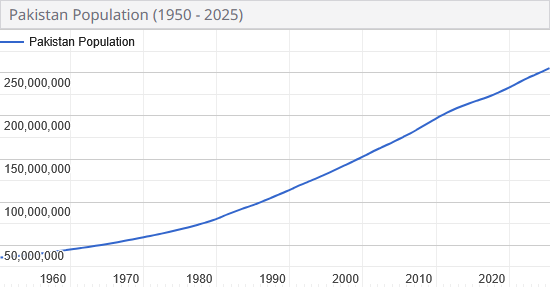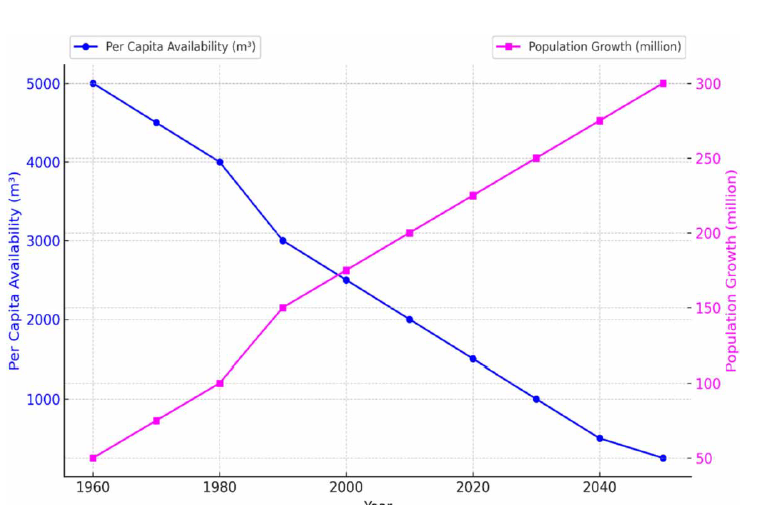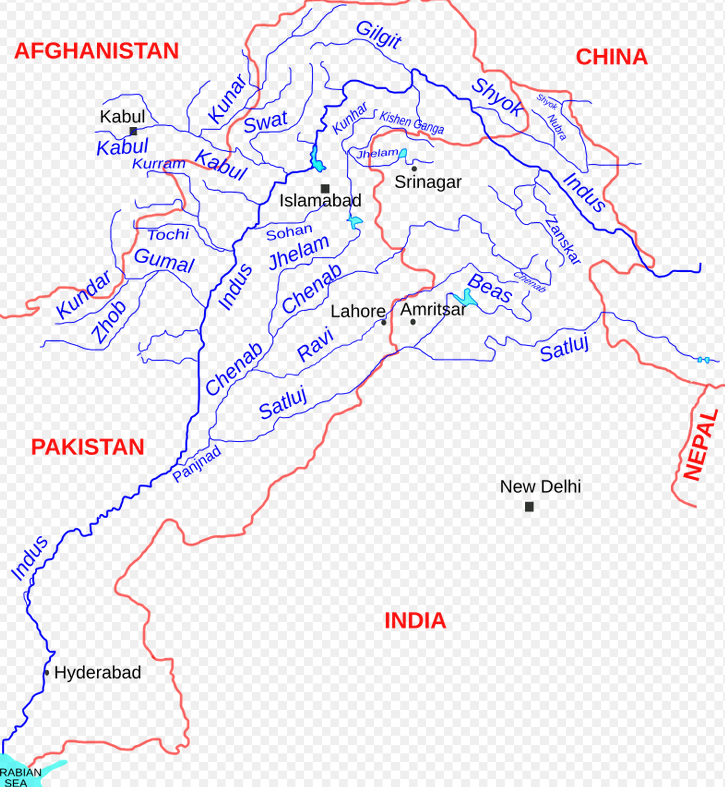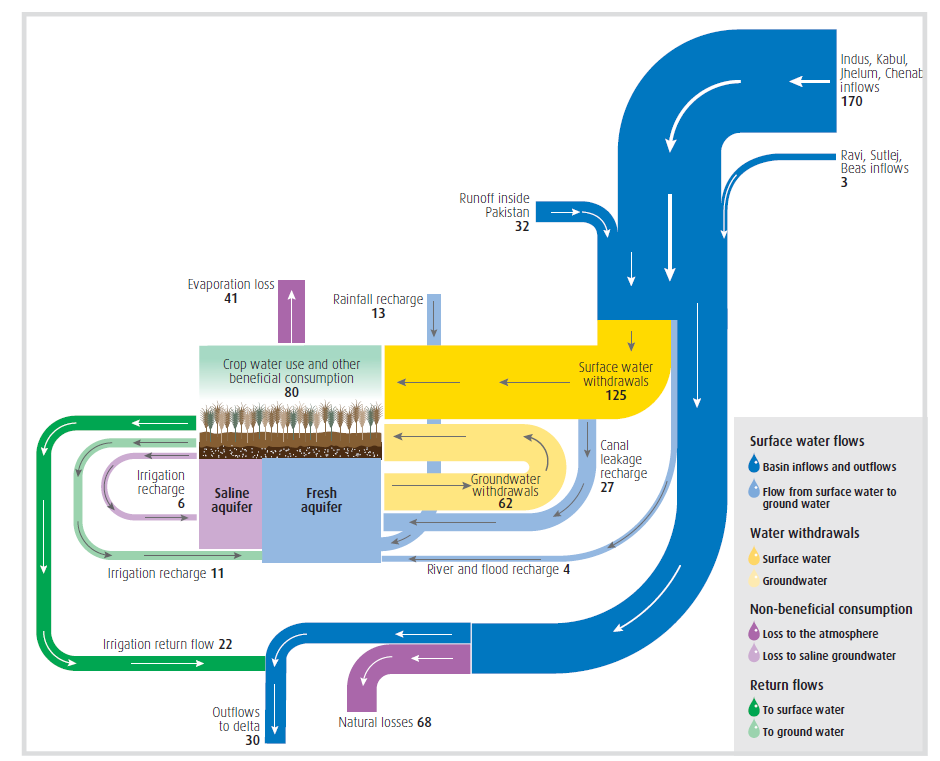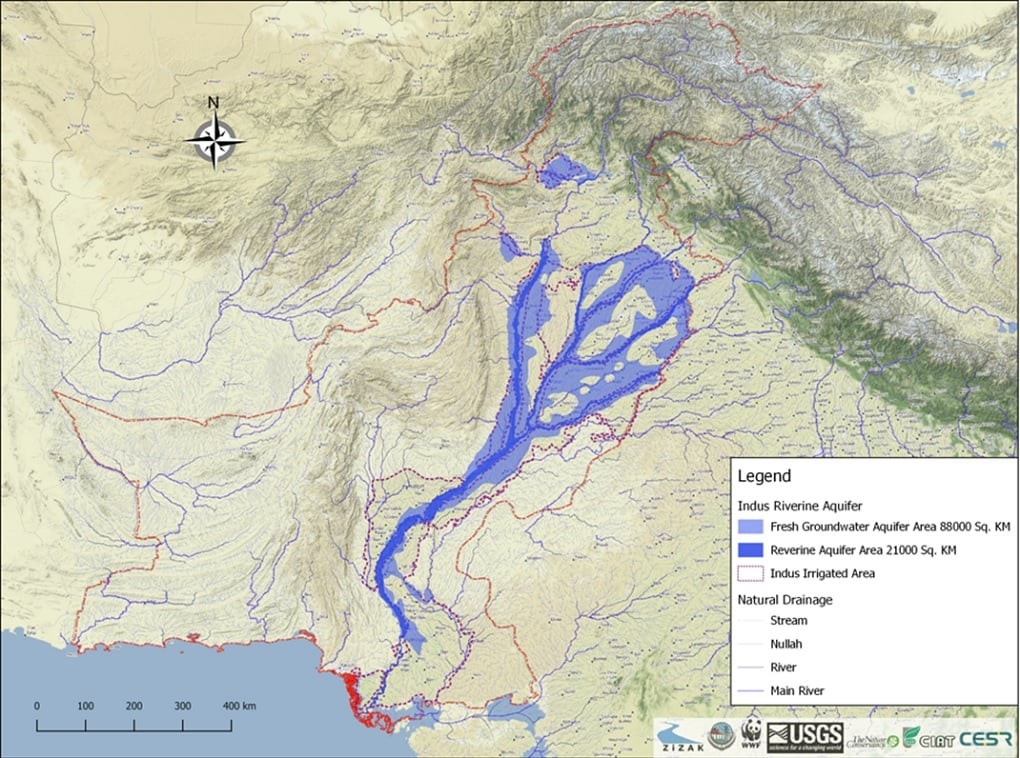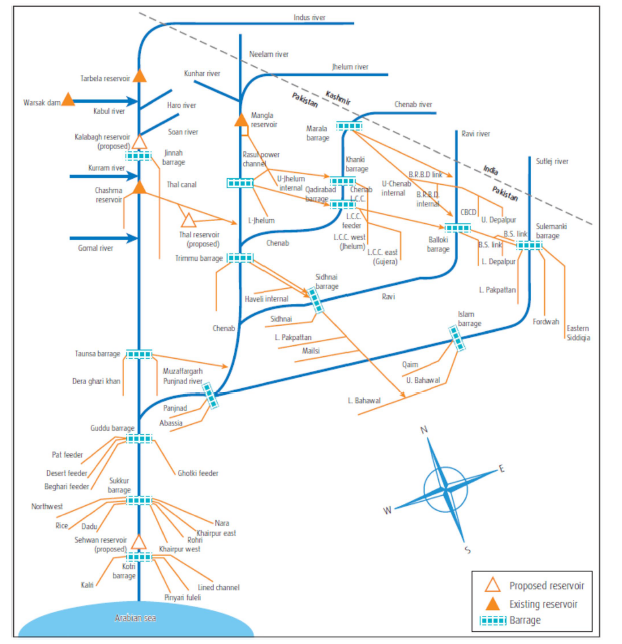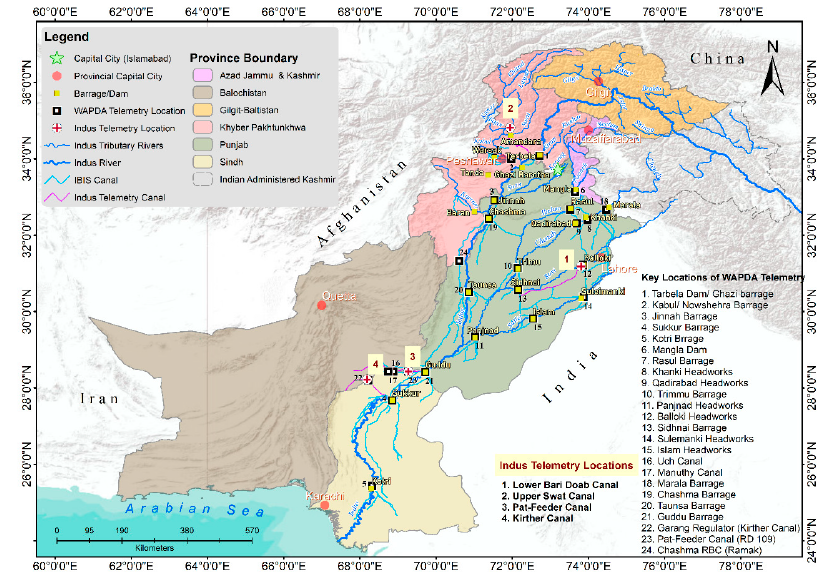Listen here on Spotify | Listen here on Apple Podcast
Episode released on June 26, 2025
Episode recorded on March 13, 2025
 Azeem Shah talks about water issues in Pakistan, including transboundary issues, solar irrigation, and improving data for more sustainable management of water resources.
Azeem Shah talks about water issues in Pakistan, including transboundary issues, solar irrigation, and improving data for more sustainable management of water resources.
Azeem Shah is an international researcher in water governance institutions at the International Water Management Institute, IWMI, based in Lahore in Pakistan. His research covers water governance and security at national and transboundary levels, climate smart agricultural interventions, automated flow measurement systems, and also solar-based irrigation for agricultural resilience. Azeem is a seasoned project management professional.
Highlights | Transcript
Pakistan:
- 5th largest populated country globally, area ~882,000 km2 (size of France + UK)
- Population ~ 255 million, mostly young (60% < 30 yr old) (Fig. 1)
- Geopolitically important because of location at cross roads of Central and South Asian states and Middle East. Neighboring countries: India, Afghanistan, China, and Iran.
- Climate: four seasons
- Topography: highest peaks > 8 km, Hindu Kush Karakoram referred to as Third Pole, Hindu Kush-Karakoram-Himalayan mountain ranges
- Indus Basin, largest contiguous irrigation system globally, canal system ~ 58,500 km long, 1.6 million field channels, ~ 19 headworks or barrages (Fig. 2)
- Average annual water budget for Indus Basin (Fig. 3)
- Pakistan independence 1947
Pakistan and India signed the Indus Waters Treat in 1960, Western Rivers to Pakistan (Indus, Jhelum, and Chenab rivers) and Eastern Rivers to India (Ravi, Beas, and Sutlej rivers) (Fig. 3), 12 inter-river linked canals and additional major and minor canals. The Treaty was spearheaded by the World Bank.
Water Challenges:
- Population growth and per capita water availability (Fig. 1b)
- Sedimentation because there are few reservoirs (Tarbela Dam, 11.9 km3 capacity; Mangla Dam, 9.1 km3 capacity)
- Share nine rivers with Afghanistan (three large rivers) but no treaties. Book Afghanistan-Pakistan Shared Waters: State of the Basins (edited by Shah, A., Lautze, J. and Meeland A.), IWMI, USAID, 170 p.
- Rivers shared between Afghanistan and Pakistan: Kabul, Gomal, Kurram, Chitral (also known as Kunar River), Pishin-Lora, Kandahar-Kand, Kadanai, Abdul Wahab, and Kaiser rivers.
Electricity: 30% from hydroelectricity and 60% from fossil fuels.
Indus Basin Irrigation System (IBIS).
Average flow ~ 173 billion m3 (km3)
Groundwater not considered in Pakistan India water treaty
Aquifers associated with Indus River (Fig. 4).
Water logging and salinity from water infrastructure: canals etc
Pakistan developed SCARP (Salinity Control and Reclamation Project) (link):
- Installed public tube wells in waterlogged areas ~1970s, 1980s
- Irrigated area expanded and tube wells used for irrigation (cheaper, diesel pumps from China
- Currently have ~ 1.5 million tube wells in Pakistan, primarily in Punjab (Lytton et al., 2021).
- Originally diesel tubewells, then electric, and now solar tube wells.
- Water allowance from canals is insufficient to grow many crops.
- Conjunctively usings surface water and groundwater
- Cropping intensity > 150%
- Groundwater estimated to be ~ 500 km3 in aquifers linked to Indus River (Fig. 4).
- Groundwater contribution ~ 60%, not sustainable
- Groundwater: buffer for long dry spells and droughts.
Water Governance:
- Original Easement Act from British times: allowed landowners to drill wells on their property
- Pakistan: National Water Policy (2018)
- Water Acts/provincial water policies recently passed in Punjab, Khyber Pakhtunkhwa, Sindh, and Balochistan
- Restrict tube wells in areas of declining groundwater
- Restrict solar wells to areas with plentiful groundwater
- Government (90%) solar schemes require high efficiency irrigation with solar systems – there is no such requirement for private schemes
- Designate critical aquifers/zones
- Groundwater levels declining by up to 1 m/yr in some cities
- Regulating groundwater in all four provinces (Punjab, Sindh, Balochistan, and)
Agriculture:
- Cropping patterns: Punjab rice and cotton (summer, Kharif, May – Oct), winter wheat (rabi season, Nov – Apr). Some maize. Also sugar cane and maize.
- Many of these crops are not suitable for sprinkle or drip systems, need flood irrigation or precision surface irrigation.
- Aim for three crops per year.
Solar irrigation
- IWMI study of solar irrigation in Pakistan (Shah and Akbar, Solar Irrigation in Pakistan, IWMI 2021 report).
- Solar irrigation connected to the grid, could serve as a remunerative crop, sell electricity to the grid (practiced in India)
- Credit system does not seem to work (farmers get credit for electricity they sell to the grid)
- Feed in tariff (FIT) system better (farmers get cash for electricity they sell to the grid), threshold ~ 20 rupees/unit of electricity.
- Most (~99.9% of solar pumps in Pakistan are not connected to the electric grid
- Solar cooperatives in India (12 – 20 farmers, government subsidy), install larger tube wells
- Shah and others installed monitoring systems, quantify operating hours of pumps
- Solar systems do not lead to more groundwater level declines because horse power of solar pumps are generally less than those of diesel and electric pumps. (sample size 600 farmers or tube wells).
- Non-solar pumps abstracted more water, proportional to installed pump capacity.
Irrigation efficiency: water loss, often recharges underlying aquifers.
- Schematic of Indus Basin Irrigation System (Fig. 5)
- High efficiency irrigation systems generally work for high value crops, horticulture.
- Lining irrigation canals reduces groundwater recharge.
Surface water use in agriculture represents 90 – 95% of total surface water.
- Contribution of agriculture to GDP is ~ 20%.
- Increasing urbanization
- Water allocation to irrigation is unsustainable.
- Need to increase water allocations toward potable water use and industry.
Monitoring Programs (Fig. 6).
- Head-middle-tail inequity in the system: farmers believed people at the headwaters abstracted more water than those in the middle or tail regions.
- Monitored discharges in each region
- Busted the head-middle-tail myth with monitoring data
- Expanding monitoring programs, monitoring discharge
Pakistan is repeatedly subjected to floods and droughts.
- Flooding in 2010: 2000 people died, 2 million people impacted. Most flood water in river Indus.
- Flooding in 2022: torrential rains in Balochistan and Punjab.
Project: Recharge Pakistan: funded by GCF, The Coca Cola Foundation, GOP, and WWF.
- Use nature-based solutions to allow water to percolate to aquifers, investing in groundwater recharge wells to harvest rainwater.
- Islamabad: Capital Development Authority installed 100 recharge wells, rainfall 1000 mm.
- Wetland restoration.
